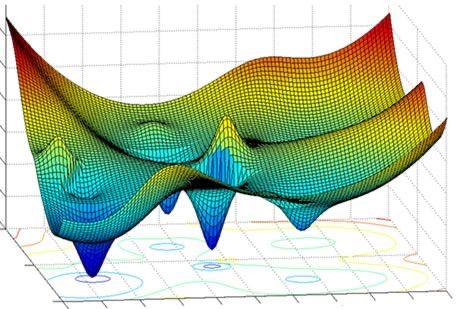In a world increasingly dominated by polarized thinking, building an accurate mental model of reality is crucial for making better decisions.
 However, our mental models often fall short, plagued by biases, maximalism, and populism — especially online. The internet amplifies a binary worldview: black and white, good and evil, right and left. For many, it’s difficult, inconvenient, or unfamiliar to entertain the idea that reality might be far more complex than a simple spectrum.
However, our mental models often fall short, plagued by biases, maximalism, and populism — especially online. The internet amplifies a binary worldview: black and white, good and evil, right and left. For many, it’s difficult, inconvenient, or unfamiliar to entertain the idea that reality might be far more complex than a simple spectrum.
Recognizing the gradients and multidimensionality of any phenomenon offers a kind of intellectual freedom, but it requires effort and a shift in perspective.
The most effective mental model for understanding objective reality isn’t a straight line or a two-dimensional plane—it’s a manifold, a mathematical concept representing a multidimensional space. Here’s why this model is so powerful.
In reality, any process of learning or understanding — whether by a human or a machine — can be likened to a gradient descent across a multidimensional manifold.
 Each new piece of information, each iteration, nudges your understanding closer to a local minimum, a “valley” in this conceptual landscape where your model of the world aligns more closely with reality. However, these local minima are rarely the global minimum—the most accurate representation of reality possible. Your mental model, no matter how refined, is almost always an approximation.
Each new piece of information, each iteration, nudges your understanding closer to a local minimum, a “valley” in this conceptual landscape where your model of the world aligns more closely with reality. However, these local minima are rarely the global minimum—the most accurate representation of reality possible. Your mental model, no matter how refined, is almost always an approximation.
This principle applies universally, from scientific inquiry to politics and business models. There’s no such thing as a definitively “right” or “wrong” decision. Instead, decision-making is a continuous navigation across the topology of reality — whether economic, social, or physical.
The effectiveness of your navigation hinges on your ability to measure “loss,” or how well your mental model predicts the real world. In machine learning, this concept is straightforward: models are optimized by minimizing prediction errors.
Yet, humans rarely apply this rigor to their own thinking, even those who position themselves as “experts” in comment sections or debates.
Why is this the case? Humans are emotional beings, driven by ego and a desire for simplicity. A black-and-white worldview is cognitively efficient—it conserves mental energy. Why expend calories on complex neural activity when you can stick to simplistic narratives and focus on more immediate, tangible concerns, like comfort or indulgence? This tendency to oversimplify reality, while energy-saving, comes at a cost: it distorts our understanding and limits our ability to make informed decisions.
 Also read:
Also read:
- Zapier Now Only Hires AI-Savvy Talent—Here’s What You Need to Know
- Leaked System Prompts of AI Vibe-Coding Tools: A Deep Dive into Cursor, Bolt, Lovable, and Manus
- Razer Unveils HyperFlux V2: A Mouse Pad That Charges Your Wireless Mouse While You Use It
Embracing a manifold-based mental model requires effort, but it offers a clearer lens on objective reality.
It encourages us to see the world as a complex, multidimensional space where truth isn’t a single point but a landscape of possibilities.
By acknowledging the gradients, iterating on our understanding, and measuring how well our models predict reality, we can move closer to truth — even if we never fully arrive.
In a time when polarized thinking dominates, this approach is not just liberating; it’s essential for navigating the intricate topology of the world around us.






